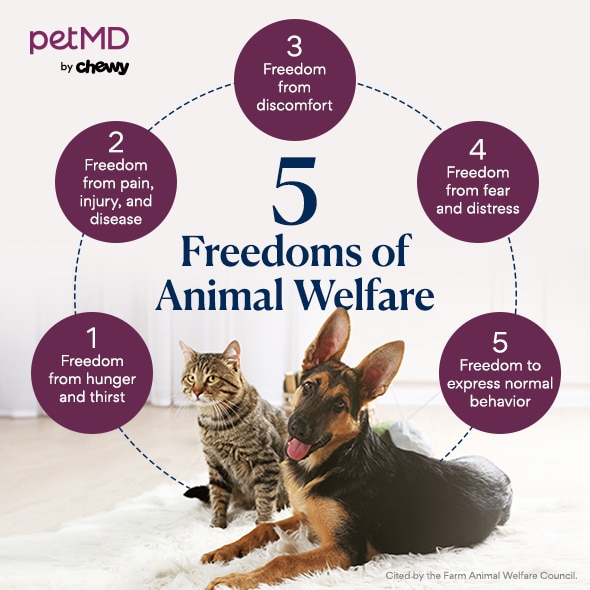How TNR (Trap, Neuter, Release) Helps Community Cats
TNR stands for “Trap, Neuter (or Spay), and Release.” Think of it as “catch and release” in fishing, where a fish is caught but then returned to the water. But in the case of TNR, we’re talking about cats. And instead of catching them for sport, it’s done to improve the cat’s quality of life.
What Is TNR for Cats?
TNR is a process in which dedicated volunteers set live traps to catch “community cats,” which are cats that are feral, strays, or abandoned who roam outside. The goal is to trap intact cats and have them spayed or neutered by a veterinarian. This helps control the cat population and improves the kitty’s overall health.
How Does TNR Work?
The TNR process begins with placing a live trap baited with cat food to attract community cats. Once the trap is placed, check it at least twice a day. When a cat is caught, check if the kitty is friendly or has any identification (such as an ID collar or microchip). This indicates that the cat has a pet parent and may already be spayed or neutered.
If the cat seems very fearful or even aggressive, check if the cat has the tip of one ear removed. “Ear tipping” is the practice of marking that a community cat has already been spayed, neutered, and returned to their home. If the cat is ear-tipped and appears otherwise healthy, release them immediately.
If the trapped cat appears to be untamed and unaltered, immediately cover the trap with a towel or blanket and apply a pheromone spray (such as Feliway Calming Spray) to help alleviate some of the cat’s stress. Transport the cat (inside the trap!) to a veterinarian who will perform the spay or neuter procedure, ideally the same day. Most vet clinics will also provide preventative care services, such as deworming, flea and tick prevention, vaccines, and, in some cases, viral testing.
Once the cat is spayed or neutered, let them recover in their trap with plenty of food and water. Monitor them for any signs of complications, and then release them in the same place they were captured.
Because trapping is stressful to any cat, only trained volunteers should engage in trapping, with the specific goal to manage a free-roaming cat population and improving the welfare of such a colony.
Why Not Place Community Cats for Adoption?
While some community cats can be tame, feral cats that are brought into a shelter environment are almost always euthanized. Most free-living cats will not make happy or safe pets, but they can live happily and—once spayed and neutered—healthily in their outdoor environment.
Why Should You TNR Cats?
There are many benefits to TNR, both for the cats and for the community.
TNR Controls the Cat Population
Without TNR, cats are left on their own to breed. According to the Spay-Neuter Assistance Program (SNAP), fertile cats can produce three litters each year, with the average litter being four to six kittens. This means, according to SNAP, that up to 4,948 kittens can be born from an intact female cat and her offspring in just seven years. TNR stops this from happening—and stops the mother cat and potential kittens from enduring hardships from living outside.
TNR Improves Quality of Life
Along with population control, spaying or neutering a cat improves their health and quality of life. Outdoor cats in a managed colony will have a huge welfare advantage over their non-altered peers when it comes to the five freedoms of animal welfare:

Cats naturally form stable, long-term relationships and live in groups, the size of which depends on the available resources. Studies have found body condition scores of spayed and neutered feral cats in a healthy range—lean, but not emaciated. This is because neutered community cats don’t typically feel the need to roam, breed, and fight.
Spayed community cats won’t become pregnant and forced to nurse, both of which result in a lower caloric intake and added stress. Kittens born into the wild often face poor welfare and have generally a low survival rate. TNR not only improves the welfare of the mom, but it prevents needless suffering and death of kittens.
Spaying and neutering can also reduce viral diseases transmitted through fighting and breeding, such as feline immunodeficiency virus (FIV). Even if they’re positive with a disease like FIV, spayed and neutered cats are less likely to spread the virus than unaltered cats.
TNR Acts as Traffic Control
A stable colony has fewer cats coming and going. This keeps the general population healthier, thanks to less fighting and disease transmission. A stable cat colony also prevents social fear and distress, as there are rarely new additions showing up and disrupting the hierarchy.
TNR reduces the amount of potential cats that can pop up, and it prevents males from wanting to roam freely.
It’s also important to know that community cats settle into a territory where they have plenty of food and shelter. If the cats are trapped and removed, it will create a vacant, resource-rich territory that new ferals will move into. These intact newcomers will begin breeding, leading to the same situation you had before. This is why it’s important to release TNR cats exactly where you found them.
TNR Reduces Nuisance Behaviors
Spaying and neutering cats significantly reduces behaviors such as caterwauling, fighting, mating, and urine spraying. Marking behavior (spraying) is significantly reduced after spaying or neutering—in fact, altering a cat can reduce marking behavior by 90–95%.
Urine marking is commonly used by intact males, mainly on vertical surfaces, to signal the cat's presence in a territory. Both males and females have increased rates of spraying during times of estrus, and males tend to spray more when courting females.
Does TNR for Cats Work?
There’s ample evidence that a well-managed TNR program:
-
Reduces shelter intake
-
Reduces euthanasia rates for cats
-
Improves the lives of community cats
If you see unowned cats on your property or in your community, reach out to a local TNR program and help them live.
How to Find TNR Programs Near You
Most local shelters provide resources about TNR programs in the area. Check out your local municipal shelter, SPCAs, cat rescues, or your veterinarian for tips and information. Some organizations offer a volunteer trapping service, while others offer rental traps. There are also many online resources available that can help you, including:
